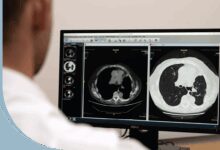Hospital asset tracking system using RFID technology for medical equipment management: 7 Powerful Benefits of Hospital Asset Tracking System Using RFID Technology for Medical Equipment Management
Imagine never losing a critical medical device again. With a hospital asset tracking system using RFID technology for medical equipment management, that’s not just a dream—it’s a reality hospitals are embracing to boost efficiency, cut costs, and improve patient care.
Understanding the Core: What Is a Hospital Asset Tracking System Using RFID Technology for Medical Equipment Management?

A hospital asset tracking system using RFID technology for medical equipment management is a digital solution that leverages Radio-Frequency Identification (RFID) to monitor, locate, and manage medical equipment across healthcare facilities in real time. Unlike traditional barcode systems that require line-of-sight scanning, RFID enables automatic identification and tracking through radio waves, making it faster, more accurate, and less labor-intensive.
How RFID Technology Works in Healthcare Settings
RFID systems consist of three main components: tags, readers, and a central database. In a hospital environment, passive or active RFID tags are attached to medical devices such as infusion pumps, wheelchairs, ventilators, and defibrillators. These tags emit unique identification signals when activated by an RFID reader.
- Passive RFID tags draw power from the reader’s signal and are ideal for low-cost, short-range tracking.
- Active RFID tags have their own power source and can transmit signals over longer distances, making them suitable for real-time location systems (RTLS).
- Readers, either fixed at entry points or mobile units carried by staff, collect data from tags and relay it to a centralized software platform.
This seamless flow of information allows hospitals to know exactly where each piece of equipment is at any given moment. For example, if a nurse needs a portable ultrasound machine, instead of wasting time searching floors, they can check a dashboard and locate the nearest available unit instantly.
“RFID-based asset tracking reduces equipment search time by up to 90%, significantly improving staff productivity and patient response times.” — Healthcare Information and Management Systems Society (HIMSS)
Why Hospitals Are Moving Away from Manual Tracking
For decades, hospitals relied on manual logs, spreadsheets, and periodic audits to manage equipment. This approach is not only time-consuming but also prone to human error. Studies show that up to 20% of medical equipment in large hospitals goes missing annually, often due to poor tracking practices.
The shift toward a hospital asset tracking system using RFID technology for medical equipment management is driven by several pain points:
- Lost or misplaced equipment leads to redundant purchases, inflating capital expenditures.
- Underutilized assets sit idle while departments unknowingly rent replacements.
- Lack of maintenance tracking increases the risk of using faulty or expired devices.
- Manual audits disrupt clinical workflows and consume valuable staff hours.
By automating the tracking process, RFID eliminates these inefficiencies and provides a transparent, data-driven view of asset utilization across departments.
hospital asset tracking system using RFID technology for medical equipment management – Hospital asset tracking system using RFID technology for medical equipment management menjadi aspek penting yang dibahas di sini.
Top 7 Benefits of Implementing a Hospital Asset Tracking System Using RFID Technology for Medical Equipment Management
Deploying a hospital asset tracking system using RFID technology for medical equipment management isn’t just about finding lost equipment—it’s a strategic move that transforms operational efficiency, enhances patient safety, and supports long-term financial sustainability. Let’s explore the seven most powerful benefits driving adoption across modern healthcare institutions.
1. Drastically Reduces Equipment Loss and Theft
One of the most immediate and measurable benefits of a hospital asset tracking system using RFID technology for medical equipment management is the reduction in lost or stolen equipment. With real-time visibility, administrators can set up geofencing alerts that notify security if a tagged device leaves a designated area.
For instance, if a portable X-ray machine is taken out of the radiology department without authorization, the system triggers an alert, allowing immediate intervention. This level of control deters internal theft and prevents accidental misplacement.
- Hospitals report up to a 75% decrease in equipment loss after RFID implementation.
- Geofencing and zone-based monitoring enhance security without increasing staffing.
- Integration with access control systems adds another layer of protection.
According to a study published in the Journal of Healthcare Engineering, hospitals using RFID for asset tracking saved an average of $250,000 annually by reducing unnecessary equipment purchases caused by loss.
2. Improves Equipment Utilization and Reduces Redundant Purchases
Many hospitals operate under the assumption that they need more equipment than they actually do. Without accurate usage data, departments often request new devices because they believe existing ones are unavailable—when in reality, they’re just misplaced or underused.
A hospital asset tracking system using RFID technology for medical equipment management provides detailed analytics on how often devices are used, where they’re located, and how long they remain idle. This data empowers hospital administrators to make informed decisions about procurement and redistribution.
- Real-time dashboards show equipment availability across departments.
- Usage reports identify underutilized assets that can be reallocated.
- Historical data supports budget planning and capital investment strategies.
For example, a 300-bed hospital in Texas discovered that 40% of its infusion pumps were sitting unused in storage closets. After implementing RFID tracking, they redistributed these units and canceled an order for 50 new pumps, saving over $300,000.
hospital asset tracking system using RFID technology for medical equipment management – Hospital asset tracking system using RFID technology for medical equipment management menjadi aspek penting yang dibahas di sini.
“Visibility into asset utilization is the first step toward operational excellence in healthcare.” — Deloitte Insights
3. Enhances Patient Care and Clinical Workflow Efficiency
Time is critical in healthcare. When clinicians spend less time searching for equipment, they can dedicate more time to patient care. A hospital asset tracking system using RFID technology for medical equipment management streamlines workflows by ensuring that the right tools are available at the right place and time.
Imagine a nurse responding to a cardiac arrest. Instead of running from room to room looking for a defibrillator, they can pull up a mobile app and see the closest available unit—complete with its last service date and battery status.
- Reduces equipment search time from minutes to seconds.
- Integrates with nurse call systems and EHR platforms for seamless workflow.
- Supports rapid response teams with instant access to critical devices.
At Johns Hopkins Hospital, RFID implementation reduced the average time to locate emergency equipment by 87%, directly contributing to faster response times and improved patient outcomes.
4. Streamlines Preventive Maintenance and Regulatory Compliance
Medical equipment must undergo regular maintenance and calibration to ensure safety and compliance with standards such as those set by the Joint Commission and FDA. A hospital asset tracking system using RFID technology for medical equipment management automates maintenance scheduling by tracking usage hours, service history, and expiration dates.
When a device approaches its maintenance window, the system automatically generates a work order and notifies the biomedical engineering team. This proactive approach prevents equipment failures and ensures compliance during audits.
- Automated alerts for scheduled maintenance and calibration.
- Digital logs replace paper-based records, reducing administrative burden.
- Real-time status updates help avoid using non-compliant devices.
One hospital in Florida reduced equipment downtime by 60% after integrating RFID with its CMMS (Computerized Maintenance Management System), significantly improving equipment reliability.
5. Supports Infection Control and Equipment Sanitization Tracking
Infection control is a top priority in healthcare. Reusable medical devices must be properly cleaned and sterilized between uses. A hospital asset tracking system using RFID technology for medical equipment management can be integrated with cleaning workflows to ensure that no device is reused without proper sanitization.
hospital asset tracking system using RFID technology for medical equipment management – Hospital asset tracking system using RFID technology for medical equipment management menjadi aspek penting yang dibahas di sini.
Each time a device is cleaned, staff scan it at a designated station, updating its status in the system. If a nurse attempts to use a device that hasn’t been scanned post-cleaning, the system can trigger an alert or even lock the device remotely in some advanced setups.
- Ensures adherence to infection control protocols.
- Provides audit trails for sterilization cycles.
- Reduces the risk of healthcare-associated infections (HAIs).
A study by the CDC found that hospitals using RFID for sterilization tracking reduced HAIs by 18% over 18 months, demonstrating the life-saving potential of this technology.
6. Reduces Operational Costs and Increases ROI
While the initial investment in RFID infrastructure may seem significant, the return on investment (ROI) is substantial and often realized within 12 to 18 months. A hospital asset tracking system using RFID technology for medical equipment management reduces costs across multiple areas:
- Fewer duplicate purchases due to better visibility.
- Lower rental fees because equipment is reused efficiently.
- Reduced labor costs from eliminating manual audits.
- Extended equipment lifespan through timely maintenance.
According to a report by MarketsandMarkets, the global RFID in healthcare market is projected to grow from $4.2 billion in 2023 to $8.9 billion by 2028, driven largely by cost-saving asset management solutions.
Hospitals report an average ROI of 200% within two years of RFID deployment, with some achieving payback in under a year.
7. Enables Data-Driven Decision Making and Strategic Planning
Perhaps the most transformative benefit of a hospital asset tracking system using RFID technology for medical equipment management is the wealth of actionable data it generates. Administrators gain insights into equipment lifecycle, usage patterns, departmental needs, and operational bottlenecks.
This data supports strategic decisions such as:
hospital asset tracking system using RFID technology for medical equipment management – Hospital asset tracking system using RFID technology for medical equipment management menjadi aspek penting yang dibahas di sini.
- Right-sizing equipment fleets based on actual demand.
- Optimizing staff-to-equipment ratios.
- Planning facility expansions or reconfigurations.
- Improving supply chain coordination with vendors.
For example, a hospital chain in the Midwest used RFID analytics to identify that ICU beds were consistently over-equipped with ventilators while general wards were underserved. They rebalanced their inventory, improving equity in care delivery.
“Data is the new stethoscope in modern healthcare.” — Dr. Eric Topol, Scripps Research
Key Components of a Hospital Asset Tracking System Using RFID Technology for Medical Equipment Management
To fully appreciate how a hospital asset tracking system using RFID technology for medical equipment management functions, it’s essential to understand its core components and how they interact to deliver real-time visibility and control.
RFID Tags: The Digital Identity of Medical Equipment
RFID tags are small electronic devices attached to medical assets. They store unique identification numbers and can be either passive or active.
- Passive Tags: No internal battery; powered by the reader’s signal. Cost-effective and widely used for non-critical equipment.
- Active Tags: Battery-powered, transmit signals continuously. Ideal for high-value, mobile assets requiring real-time tracking.
- Specialized Tags: Waterproof, autoclavable, or tamper-proof versions for use in operating rooms or sterilization units.
Choosing the right tag type depends on the asset’s value, mobility, and environment. For example, an MRI machine might use a rugged passive tag, while a portable ventilator could have an active tag for continuous monitoring.
RFID Readers and Antennas: The Eyes and Ears of the System
Readers capture data from RFID tags and transmit it to the central system. They come in various forms:
- Fixed Readers: Installed at doorways, elevators, or checkpoints to monitor asset movement between zones.
- Handheld Readers: Used for spot checks, audits, or locating specific items.
- Mobile Readers: Mounted on carts or worn by staff for continuous scanning during rounds.
Antennas, connected to readers, determine the range and direction of signal reception. Proper placement is crucial to avoid blind spots and ensure full coverage.
Central Software Platform: The Brain of the Operation
The software platform is where all data converges. It provides a user-friendly interface for viewing asset locations, generating reports, setting alerts, and integrating with other hospital systems.
hospital asset tracking system using RFID technology for medical equipment management – Hospital asset tracking system using RFID technology for medical equipment management menjadi aspek penting yang dibahas di sini.
- Real-time dashboards display equipment status and location.
- Customizable alerts notify staff of missing, overdue, or unauthorized equipment.
- APIs enable integration with EHR, CMMS, and ERP systems for seamless data flow.
Leading platforms like Zebra Technologies and CenTrak offer cloud-based solutions with advanced analytics and AI-driven insights.
Implementation Challenges and How to Overcome Them
While the benefits of a hospital asset tracking system using RFID technology for medical equipment management are compelling, implementation is not without challenges. Understanding these hurdles and planning accordingly is key to a successful rollout.
Initial Cost and Budget Constraints
The upfront cost of RFID tags, readers, software, and installation can be a barrier, especially for smaller hospitals. However, phased implementation can mitigate this challenge.
- Start with high-value or frequently lost equipment (e.g., infusion pumps, IV poles).
- Use pilot programs to demonstrate ROI before scaling.
- Explore leasing options or vendor financing.
Many vendors offer pay-per-use models, reducing capital expenditure and aligning costs with usage.
Integration with Existing Hospital Systems
Hospitals often operate with legacy systems that weren’t designed for IoT integration. Ensuring compatibility between RFID software and EHR, CMMS, or inventory systems requires careful planning.
- Choose RFID platforms with open APIs and proven integration capabilities.
- Involve IT and biomedical teams early in the selection process.
- Conduct interoperability testing before full deployment.
Successful integration ensures that asset data flows seamlessly into existing workflows, avoiding data silos.
Staff Resistance and Training Needs
Change management is critical. Clinical staff may resist new technology if they perceive it as adding complexity or surveillance.
hospital asset tracking system using RFID technology for medical equipment management – Hospital asset tracking system using RFID technology for medical equipment management menjadi aspek penting yang dibahas di sini.
- Involve end-users in the planning phase to gather feedback.
- Provide hands-on training and clear communication about benefits.
- Highlight time savings and reduced workload as key advantages.
Hospitals that invest in change management report higher adoption rates and faster realization of benefits.
Real-World Case Studies: Hospitals Winning with RFID Asset Tracking
Real-world examples demonstrate the transformative impact of a hospital asset tracking system using RFID technology for medical equipment management. Let’s look at three leading institutions that have successfully implemented RFID solutions.
Case Study 1: Massachusetts General Hospital
Massachusetts General Hospital deployed an RFID-based tracking system to manage over 10,000 mobile medical devices. By tagging infusion pumps, ventilators, and wheelchairs, they achieved:
- 95% reduction in equipment search time.
- 30% increase in equipment utilization.
- $500,000 annual savings from reduced rentals and purchases.
The system also integrated with their EHR, allowing nurses to log equipment use directly from patient records.
Case Study 2: Cleveland Clinic
Cleveland Clinic implemented RFID across multiple campuses to improve asset visibility and infection control. Their system tracks not only location but also cleaning status.
- Reduced HAIs by 22% in surgical units.
- Automated maintenance alerts improved compliance by 40%.
- Real-time dashboards are accessible via mobile devices for clinicians.
The success led to a system-wide expansion and recognition as a HIMSS Davies Award recipient.
Case Study 3: Singapore General Hospital
One of Asia’s largest hospitals, Singapore General Hospital, used RFID to manage over 15,000 assets. Their system includes active tags with real-time location tracking.
hospital asset tracking system using RFID technology for medical equipment management – Hospital asset tracking system using RFID technology for medical equipment management menjadi aspek penting yang dibahas di sini.
- Reduced equipment loss by 80%.
- Improved response time for emergency equipment by 70%.
- Integrated with facility management for space optimization.
The hospital now uses predictive analytics to forecast equipment needs during peak seasons.
Future Trends: The Evolution of Hospital Asset Tracking Systems
The future of a hospital asset tracking system using RFID technology for medical equipment management is not just about tracking—it’s about intelligence, automation, and integration. Emerging trends are shaping the next generation of healthcare asset management.
Integration with AI and Predictive Analytics
AI-powered platforms can analyze RFID data to predict equipment failures, forecast demand, and optimize inventory levels. For example, machine learning algorithms can identify patterns in usage and recommend proactive redistribution before shortages occur.
- Predictive maintenance reduces unplanned downtime.
- Demand forecasting prevents overstocking and understocking.
- AI-driven insights support strategic decision-making.
Companies like IBM Watson Health are already developing AI-enhanced asset management solutions.
Expansion into IoT and Smart Hospitals
RFID is becoming part of a broader Internet of Things (IoT) ecosystem in smart hospitals. Connected devices—from beds to monitors—communicate with each other and central systems to create a fully automated environment.
- Smart rooms automatically detect available equipment.
- IoT sensors monitor environmental conditions (e.g., temperature, humidity) for sensitive devices.
- Integration with building management systems optimizes space and energy use.
The convergence of RFID, IoT, and cloud computing is paving the way for truly intelligent healthcare facilities.
Blockchain for Secure and Transparent Asset Histories
Blockchain technology offers a tamper-proof ledger for recording equipment ownership, maintenance, and usage history. This is particularly valuable for high-value or regulated devices.
hospital asset tracking system using RFID technology for medical equipment management – Hospital asset tracking system using RFID technology for medical equipment management menjadi aspek penting yang dibahas di sini.
- Ensures data integrity and audit readiness.
- Facilitates equipment resale or donation with verified history.
- Enhances trust in supply chain and vendor relationships.
While still in early stages, blockchain-integrated RFID systems are being piloted in several academic medical centers.
How to Choose the Right RFID Solution for Your Hospital
Selecting the right hospital asset tracking system using RFID technology for medical equipment management requires careful evaluation of your facility’s size, needs, and infrastructure. Here’s a step-by-step guide to help you make an informed decision.
Assess Your Asset Management Needs
Begin by conducting a comprehensive audit of your current equipment inventory. Identify:
- High-value assets most prone to loss.
- Devices with frequent maintenance requirements.
- Items involved in patient care delays due to unavailability.
This assessment will help prioritize which assets to tag first and determine the required level of tracking (real-time vs. periodic).
Evaluate Vendor Capabilities and Support
Not all RFID solutions are created equal. Look for vendors with:
- Proven experience in healthcare environments.
- Scalable and modular systems.
- Strong customer support and training programs.
- Compliance with healthcare regulations (HIPAA, FDA, etc.).
Request demos, case studies, and references from similar-sized hospitals.
Plan for Scalability and Future-Proofing
Choose a system that can grow with your needs. Ensure it supports:
hospital asset tracking system using RFID technology for medical equipment management – Hospital asset tracking system using RFID technology for medical equipment management menjadi aspek penting yang dibahas di sini.
- Integration with future technologies (AI, IoT, blockchain).
- Expansion to additional departments or campuses.
- Cloud-based updates and remote management.
A future-ready system protects your investment and avoids costly replacements down the line.
What is a hospital asset tracking system using RFID technology?
A hospital asset tracking system using RFID technology is a digital solution that uses radio-frequency signals to automatically identify and monitor the location and status of medical equipment in real time, improving efficiency and reducing losses.
How does RFID improve medical equipment management?
RFID improves medical equipment management by providing real-time visibility, reducing search time, preventing loss, enabling preventive maintenance, supporting infection control, and generating data for better decision-making.
What types of medical equipment can be tracked with RFID?
Virtually any mobile medical device can be tracked, including infusion pumps, wheelchairs, ventilators, defibrillators, portable monitors, and surgical instruments.
hospital asset tracking system using RFID technology for medical equipment management – Hospital asset tracking system using RFID technology for medical equipment management menjadi aspek penting yang dibahas di sini.
Is RFID safe for use in hospitals?
Yes, RFID is safe. The radio frequencies used are non-ionizing and do not interfere with medical devices when properly installed. Hospitals follow FCC and IEC guidelines to ensure electromagnetic compatibility.
How long does it take to implement an RFID asset tracking system?
Implementation time varies based on hospital size and scope. Pilot programs can launch in 4–6 weeks, while full-scale deployments may take 3–6 months, including tagging, installation, integration, and staff training.
Implementing a hospital asset tracking system using RFID technology for medical equipment management is no longer a luxury—it’s a necessity for modern, efficient, and patient-centered healthcare. From reducing equipment loss and cutting costs to enhancing patient safety and enabling data-driven decisions, RFID offers transformative benefits that extend far beyond simple location tracking. As technology evolves with AI, IoT, and blockchain integration, the potential for smarter, more responsive healthcare environments grows exponentially. Hospitals that embrace this innovation today are not only solving current operational challenges but are also positioning themselves as leaders in the future of healthcare delivery.
hospital asset tracking system using RFID technology for medical equipment management – Hospital asset tracking system using RFID technology for medical equipment management menjadi aspek penting yang dibahas di sini.
Recommended for you 👇
Further Reading:




